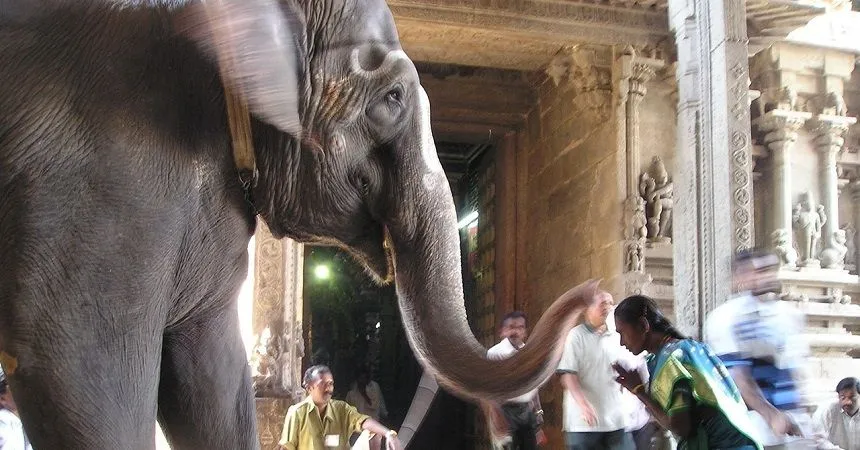12 Jyotirlinga names and places in India to worship lord shiva temple
India is a country of various cultures and religions. The belief and faith of the people living here makes India a culture rich country.
The number of followers of Hindu religion is highest in India. According to the belief of Hindu religion, there are 33 crore deities in it, which make this religion even more cultured.
The most important deity in Hinduism is Lord Shiva, who is considered infinite from the beginning. According to belief, this world has started from Shiva, and the whole creation will end only in him.
You will get to hear many religious stories related to Lord Shiva all over India, as well as you will get to see many religious places, temples etc. related to Lord Shiva all over India. The most famous religious place among them is also Jyotirlinga (12 Jyotirlinga). Jyotirlinga exhibits the great powers of Lord Shiva.

The real meaning of "Jyotirlinga" is "pillar of light". These 12 temples are considered to be the most powerful places for worshiping the Shakti of Shiva.
Hindu devotees from across the country often undertake pilgrimages and spiritual journeys to visit these Jyotirlingas to seek the blessings of Lord Shiva and his various forms. Lakhs of people visit these Jyotirlingas every year to seek the blessings of the divine power.
There are twelve traditional Jyotirlinga temples located in India, each are considered very sacred and powerful. These temples are located in the states of Maharashtra, Uttar Pradesh, Andhra Pradesh, Karnataka, Madhya Pradesh, Assam, Uttarakhand, Tamil Nadu.
12 Jyotirlinga with name and place | बारह ज्योतिर्लिंग
The 12 Jyotirlingas established in different states of India are the source of Lord Shiva's powers.
Each Jyotirlinga contains within itself a unique power of Lord Shiva. By awakening whom any devotee can fulfill his wishes through his worship and devotion.
The names and places of these twelve Jyotirlingas are as follows –
- Somnath Jyotirlinga: Gujarat Veraval, Saurashtra
- Mallikārjuna Jyotirlinga: Andhra Pradesh, Srisailam
- Mahakaleshwar Jyotirlinga: Madhya Pradesh Ujjain
- Omkareshwar Jyotirlinga: Madhya Pradesh Khandwa
- Kedarnath Jyotirlinga: Uttarakhand Kedarnath
- Bhimashankar Jyotirlinga: Maharashtra Khed taluka, Pune
- Kashi Vishwanath Jyotirlinga: Maharashtra Trimbak, near Nashik
- Trimbakeshwar Jyotirlinga: Maharashtra
- Nageshwar Jyotirlinga: Gujarat Near Dwarka
- Baidyanath Jyotirlinga: Jharkhand Deoghar
- Rameshwaram Jyotirlinga: Tamil Nadu Rameswaram
- Grishneshwar Jyotirlinga: Maharashtra Aurangabad
These Jyotirlingas are located in different parts of India. Each Jyotirlingas have their own story and spiritual significance. For those who believe in Hindu religion, it is necessary to visit and worship them at least once in their lifetime.
The pilgrimage visit to all the 12 Jyotirlingas is known as Jyotirlinga Yatra. This yatra can liberate the devotee from the cycle of birth and death.This is the reason, that devotees throng these Jyotirlingas throughout the year. Every devotee gets the reward according to his/her faith.
Meaning of Jyotirlinga
The word "Jyotirlinga" is made up of two Sanskrit words. "Jyoti" means "light" or "glowing," and "linga" refers to the "mark" or "sign" of Lord Shiva.
The term Jyotirlinga refers to the manifestation of Shiva in the form of a lingam, which symbolizes the cosmic energy of the Lord and is said to be the source of all creation, preservation and destruction.
In Hinduism, the lingam is considered a supernatural representation of the god Shiva, and the jyotirlinga is a particularly powerful and sacred manifestation of the linga.
Jyotirlinga is also called Swayambhu, and is believed to be the most powerful form of Lord Shiva, capable of bestowing blessings, fulfilling wishes and giving salvation to the devotees.
According to Hindu legend, Jyotirlinga temples are believed to be the places where Shiva appeared as a fiery pillar of light.
The 12 traditional Jyotirlinga temples in India are said to have been established by Lord Shiva himself and are considered particularly sacred places of worship.
In the context of Jyotirlinga in Hinduism, light is also a metaphor for wisdom, knowledge that brings a person closer to the ultimate truth. So the term Jyotirlinga refers to this aspect of spiritual knowledge as well.
Importance of Jyotirlingas in Hinduism
Jyotirlinga temples hold great importance in Hinduism, and are considered a particularly sacred place of worship. Praying for fulfillment of wishes in these Jyotirlingas gives special rewards. According to Hindu mythology, Jyotirlinga is a manifestation of Lord Shiva in the form of a linga, which symbolizes the cosmic energy of the Lord.
Devotees believe that by visiting Jyotirlinga temples and worshiping the Shivalinga, they can get special blessings from the Lord, fulfill their wishes and attain salvation. Jyotirlinga temples are also considered particularly powerful for spiritual practices such as meditation and yoga, as well as for receiving blessings from the deities.
Additionally, each of the 12 Jyotirlinga shrines has its own unique legends and stories associated with them, which have a historical and mythological significance. These stories enrich the spiritual and devotional significance of these temples, and make them places of immense spiritual and historical importance.
Apart from their religious importance, the temples also attract a large number of tourists and are also seen as an important cultural heritage site and pilgrimage site.
Spiritual Significance of Jyotirlinga
These Jyotirlingas have their own spiritual significance in different ways. Devotees should visit and worship them according to their faith. When you perform Abhishek on the right Jyotirlinga to fulfill your wish, you can get your wish fulfilled by awakening that power source.
Why only 12 Jyotirlinga
The 12 Jyotirlingas are considered particularly sacred pilgrimage sites in the Shaivism tradition of Hinduism. Jyotirlinga is considered to be the symbol of Lord Shiva in the form of Linga. According to Shaivism tradition, these 12 tirthas(sacred places) have been chosen as particularly powerful and auspicious places for the worship of Shiva. Devotees in Shaivism visit them as part of a spiritual pilgrimage, often referred to as the "Jyotirlinga Yatra".